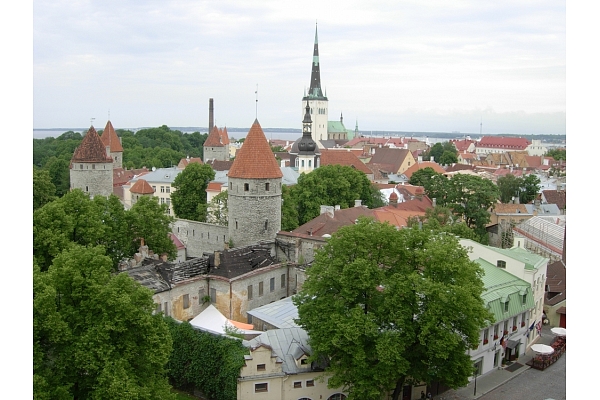Real estate market
Estonia’s property market that crash-landed in 2008 along with the worldwide credit crunch after becoming overheated in 2005–2007, showed first signs of recovery in 2011.
While the total volume of real estate transactions in 2011 remained far below the boom level and also the number of transactions was only a half of that in 2007, the growth was notable compared to the previous year.
Market activity
* The total volume of real estate transactions reached EUR 1,5bn in 2011, an increase by 25% compared to the previous year. At the same time, the number of real estate transactions rose by 3% to 32,486.
* The value of purchases/sales of dwellings accounted for 48% of the total volume in 2011; 32% of the total volume comprised of deals with undeveloped land plots and 19% of deals with developed land plots. In comparison with the previous year, the average value of deals with undeveloped land plots rose by 17% in 2011, while that of developed land by 28% and of dwellings by 13%.
Region-wise, the average value of a deal rose the most in Northern Estonia, by 32% year-on-year. In Central Estonia, the average value of transactions increased by 14%, in Northeast by 8% and in West by 1%. According to the statistics, the largest market for detached houses and apartments, that of the capital Tallinn, has also recovered the most, together with the surrounding county of Harjumaa, which in turn is by far the most active market of single-family homes.
Dwelling market
* The dwelling market’s activity is related to the availability of home loans. While the availability of home loans has improved somewhat since 2009, and the interest rates have come down as well the total volume of mortgages is still in decrease. This is due to two factors: firstly, the banks have made home loans available indeed, but toughened the mortgage conditions in comparison with the boom years; secondly, the consumers are still reluctant to make larger, more expensive purchases, such as cars and real estate.
* The development activity, which stalled almost completely in 2008–2010, was re-launched in 2011. Several real estate developers have either finished their frozen projects or started new ones. Still, in the property market, only a few brand new apartments are traded due to their scarce availability. Also, the cheaply constructed dwellings from the boom era get almost no attention. The customers – the few able or willing to take on a mortgage –, are quite picky and prefer quality, prime location and environment over low price. This exclusiveness explains why the cash volume of property transactions has risen at a higher pace than the number of deals in 2011.
* According to the buildings registry Ehitusregister, 1,918 new dwellings were issued a permit of use in 2011, 406 less than in the previous year. The majority of new dwellings were 2- and 3-storey detached houses. At the same time, the average floor area of a dwelling rose to 107 sq.m in 2011, the largest average area of the decade.
* At the same time, in 2011, permits were given to construct 2,830 dwellings, an increase by nearly 10% compared to the previous year.
Constructions output
* The total construction volume of Estonian construction enterprises increased by 27% in 2011 compared to the previous year, to EUR 1.7bn, according to the estimation of the statistical office Eesti Statistika. Thus, the decrease in the volume of construction that started in 2008, ended in 2011, and the sector has turned to the growth path again.
Compared to the boom years, the share of private sector contracts has declined significantly, and still stands low. In fact, the reparation works of public buildings, largely funded by the sales of Estonia's excess CO2 quotas, is behind the last year's rise of the total construction volume. Also, large-scale infrastructure construction projects, partly funded by the EU, contributed to the growth of the sector.
The total volume of building construction reached EUR 979m and that of infrastructure EUR 699m in 2011. In comparison with the previous year, the building construction grew by 28%, while infrastructure construction added 25% in volume.
According to Eesti Statistika, the significant increase in volume is largely due to the low comparison base of 2010, when the sector was at its lowest. Also, the added volume in repair and refurbishment works contributed the most to the overall growth.
Commercial propety
* The construction of commercial buildings continued also to contract last year with both the number of buildings completed
as well as the total floor area declining in yearly comparison. 720 commercial buildings with a total floor area of 326,000 sq.m were granted permits of use in 2011.
* At the same time, the trade in commercial buildings has enlivened in 2011. During the year, several large shopping centres in Tallinn changed owners and bankruptcy receivers were able to find new owners for several plants. All major supermarket chains continued to expand in 2011 as well, not only in Tallinn but also in somewhat remote corners of the country, providing employment for new shopping centres' developers and builders.
* Compared to the previous year, the trade volume in non-dwellings increased by 61% to EUR 437 in 2011. The number of transactions in such property increased by 10% y-o-y to 2,316. North Estonia - mostly Tallinn and nearby counties - produced 72% of the total trade volume, while giving only 19% of the deals' amount.
Photo: Stock.XCHNG





